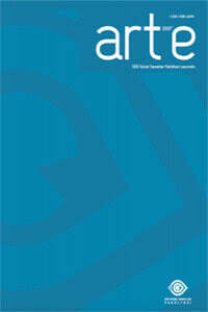ÇAĞIMIZ TİYATRO EĞİTİMİNDE SES-NEFES-BEDEN İLİŞKİSİ
Tiyatro yeni ve güncel olanı yakalayan olmalıdır. Mademki yüzyıllardır süregelen “insanı insana insanla anlatan” sanat dalıdır tanımlaması, insansız bu sanatın icra edilmeyeceğini vurgulamıştır, öyleyse, tiyatro sanatı, insana dair gelişimleri ve değişimleri takip etmek durumundadır. Bugün seyirciye ulaşmak için oyunculuk ve sahnelenme alanında daha doğal, daha evrensel bir dil, daha hızlı, daha merak uyandıran, tek bir uyarıcı ile hayalgücünü ya da düşünceleri altüst etmeye çalışan daha vurucu yöntemler yakalanmaya çalışılmalıdır. Bu da aslında sanatçının bitmek, tükenmek bilmeyen eğitimi ve araştırmaları, çalışması ile mümkün olacaktır. Ancak bu noktaya gelene kadar, oyuncunun temel eğitiminde de yeni arayışlara gidilmesi ve reform yapılması kaçınılmazdır. Konuşma Sanatı Eğitimi ya da Diksiyon adı altında görülen derslerin, beden kullanımı ile sentezlenmesi, sadece düzgün konuşan ve tonlayan değil, bedenini de sözcükler kadar anlamlı kullanan, bedeniyle de anlatan ve tüm bunların yanısıra, gündelik yaşamın da vazgeçilmezi olan nefesi de kullanarak oyunculuğu ve oyunu yaşatarak seyircisine izletebilmeli, zihninde ve yüreğinde hissettirebilmelidir.
Anahtar Kelimeler:
ÇAĞIMIZ, TİYATRO, EĞİTİMİNDE
QUILTING IN THE CITY OF BURDUR
The first examples of quilt, which is defined as the covering obtained by filling the gap between two fabrics with a kind of filling material usually involving wool or cotton and then sewing the fabrics, were firstly leaves of the trees and with the age of hunting, they became the coats of animals. The first examples of quilts of nomadic-Turks are the animal coats and felt technique coverings. When the types of quilts are investigated, it is seen that they vary according to the materials available, daily lives and tastes of the period. The aim of this study is; to identify the equipment and the materials used in the production of Burdur handmade quilts, to determine the sewing techniques of handmade quilts, to investigate the features and schemas of motifs and patterns of old and contemporary handmade quilts, and to review the present state of Burdur quilting art. In this study, data has been collected by interviewing the artisans who are presently registered to “Burdur Tailors, Cap Makers, Ready Made Sellers and Haberdashers Association”. It has been concluded that quilts in the city of Burdur bear local features in terms of both technical and artistic aspects, there are unique samples of quilt and quilt making in Burdur is a handcraft which is in danger of extinction today.
Keywords:
Handcrafts, quilt tacking, sıklama, balgameç. ,
- Yayın Aralığı: Yılda 2 Sayı
- Başlangıç: 2008
- Yayıncı: Süleyman Demirel Üniversitesi Güzel Sanatlar Fakültesi
Sayıdaki Diğer Makaleler
Oyunculuk Eğitiminde Eğitimcinin "Eğitimi"nin Önemi
Oyunculukta Yaratıcılık Eğitimi
Oyunculuk Eğitiminde Eğitimcinin "Eğitimi"nin Önemi
Dünden Bugüne Tiyatro Anlayışında Değişen Beden Algısı
Ali Tomak, Sena Sengir, Zehra Sengir
Uluslararası Arda Kanpolat Tiyatro Festivali ve Kongresi:Notlar
Performans Sanatı, Teknoloji İle İlişkisi ve Sahne Sanatları Eğitimindeki Rolü
Türkiye'de Çağdaş Sanatta Kurumsal Eleştirinin Sorunları
